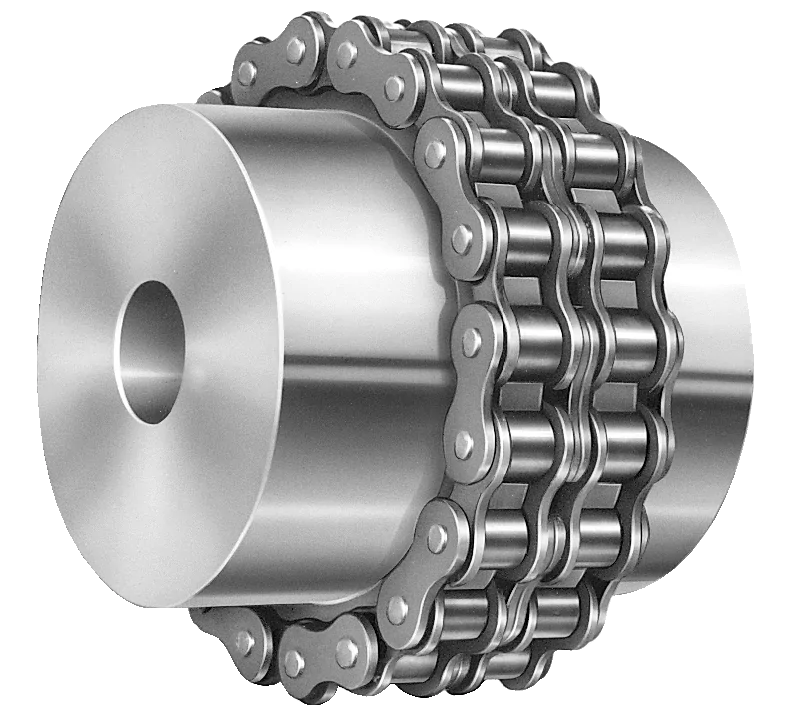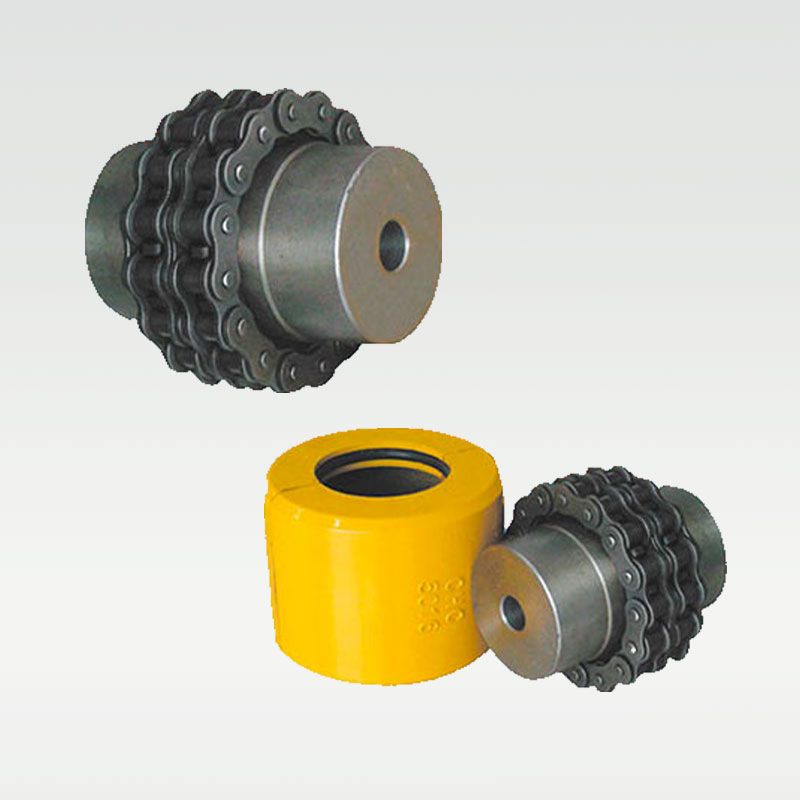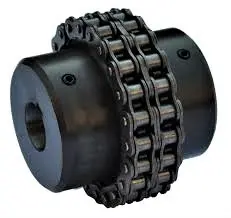Product Description
Product Description
COUPLINGS
| HRC | FCL | Chain coupling | GE | L | NM | MH | Torque limiter |
| HRC 70B | FCL90 | KC4012 | GE14 | L050 | NM50 | MH45 | TL250-2 |
| HRC 70F | FCL100 | KC4014 | GE19 | L070 | NM67 | MH55 | TL250-1 |
| HRC 70H | FCL112 | KC4016 | GE24 | L075 | NM82 | MH65 | TL350-2 |
| HRC 90B | FCL125 | KC5014 | GE28 | L090 | NM97 | MH80 | TL350-1 |
| HRC 90F | FCL140 | KC5016 | GE38 | L095 | NM112 | MH90 | TL500-2 |
| HRC 90H | FCL160 | KC6018 | GE42 | L099 | NM128 | MH115 | TL500-1 |
| HRC 110B | FCL180 | KC6571 | GE48 | L100 | NM148 | MH130 | TL700-2 |
| HRC 110F | FCL200 | KC6571 | GE55 | L110 | NM168 | MH145 | TL700-1 |
| HRC 110H | FCL224 | KC8018 | GE65 | L150 | NM194 | MH175 | |
| HRC 130B | FCL250 | KC8571 | GE75 | L190 | NM214 | MH200 | |
| HRC 130F | FCL280 | KC8571 | GE90 | L225 | |||
| HRC 130H | FCL315 | KC1571 | |||||
| HRC 150B | FCL355 | KC12018 | |||||
| HRC 150F | FCL400 | KC12571 | |||||
| HRC 150H | FCL450 | ||||||
| HRC 180B | FCL560 | ||||||
| HRC 180F | FCL630 | ||||||
| HRC 180H | |||||||
| HRC 230B | |||||||
| HRC 230F | |||||||
| HRC 230H | |||||||
| HRC 280B | |||||||
| HRC 280F | |||||||
| HRC 280H |
Catalogue
Workshop
Lots of coupling in stock
FAQ
Q1: Are you trading company or manufacturer ?
A: We are factory.
Q2: How long is your delivery time and shipment?
1.Sample Lead-times: 10-20 days.
2.Production Lead-times: 30-45 days after order confirmed.
Q3: What is your advantages?
1. The most competitive price and good quality.
2. Perfect technical engineers give you the best support.
3. OEM is available.
/* March 10, 2571 17:59:20 */!function(){function s(e,r){var a,o={};try{e&&e.split(“,”).forEach(function(e,t){e&&(a=e.match(/(.*?):(.*)$/))&&1

Standard Sizes and Specifications of Roller Chain Couplings
Roller chain couplings come in various sizes and specifications to accommodate a wide range of mechanical power transmission applications. The standard sizes and specifications of roller chain couplings typically include:
- Chain Size: Roller chain couplings are available in different chain sizes, such as 40, 50, 60, 80, 100, etc. The chain size indicates the pitch of the roller chain used in the coupling.
- Torque Capacity: The torque capacity of a roller chain coupling varies based on its size and design. Manufacturers provide torque ratings that specify the maximum amount of torque the coupling can handle without failure.
- Speed Rating: Roller chain couplings have a maximum speed rating, which indicates the highest rotational speed at which the coupling can operate safely and efficiently.
- Material: Roller chain couplings are commonly made from materials such as carbon steel, stainless steel, or nickel-plated steel, providing different levels of strength, corrosion resistance, and durability.
- Hub Type: Roller chain couplings may come with different hub types, such as pilot bore hubs or taper bore hubs, to suit various shaft connections.
- Number of Teeth: Some roller chain couplings have specific tooth configurations that can affect their performance and backlash characteristics.
- Misalignment Capacity: Manufacturers specify the maximum allowable misalignment (angular and parallel) that the coupling can accommodate to ensure reliable operation.
It is essential to refer to the manufacturer’s catalogs or product specifications to determine the exact sizes and specifications available for specific roller chain couplings. Selecting the right size and specifications depends on the application’s requirements, including torque, speed, misalignment, and environmental conditions.

Specialized Roller Chain Couplings for High-Torque or High-Speed Applications
Yes, there are specialized roller chain couplings designed to handle high-torque or high-speed applications. These specialized couplings are engineered to meet the specific demands of such industrial scenarios. Here are some key features and considerations for high-torque or high-speed roller chain couplings:
- Enhanced Strength: Roller chain couplings for high-torque applications are constructed using robust materials that offer higher tensile strength and improved fatigue resistance. This allows them to withstand the increased torque without experiencing premature failure.
- Optimized Tooth Design: High-torque roller chain couplings may feature specially designed sprockets and chain tooth profiles to ensure reliable torque transmission and minimize wear under heavy loads.
- Increased Chain Size: In high-torque applications, larger chain sizes may be used to handle the elevated power requirements. Larger chains provide more surface area for torque transmission and can accommodate higher loads.
- Heat Treatment: Some high-torque roller chain couplings may undergo heat treatment processes to improve hardness and wear resistance, making them suitable for demanding applications.
- Dynamic Balancing: For high-speed applications, roller chain couplings are often dynamically balanced to minimize vibration and prevent potential resonance issues that could occur at elevated rotational speeds.
- Lubrication: Proper lubrication is crucial for high-speed roller chain couplings to reduce friction and wear. Some designs may incorporate special lubrication systems to ensure smooth operation.
- Material Selection: High-speed roller chain couplings may use materials with lower mass and inertia to decrease the effects of centrifugal forces at high rotational speeds.
When selecting a roller chain coupling for high-torque or high-speed applications, it is essential to consider the specific operating conditions, torque requirements, rotational speeds, and any other factors that might impact the coupling’s performance. Consulting with coupling manufacturers or engineering experts can help identify the most suitable coupling for a particular application.

Key Design Considerations for Roller Chain Couplings in Power Transmission Systems
When using roller chain couplings in power transmission systems, several key design considerations should be taken into account:
- Torque and Power Ratings: Calculate the required torque and power ratings to ensure the roller chain coupling can handle the expected loads and prevent overloading.
- Speed: Consider the operating speed of the coupling to select a roller chain and sprocket combination that can handle the rotational speed without experiencing excessive wear or fatigue.
- Shaft Sizes: Ensure that the roller chain coupling’s sprockets are compatible with the shaft sizes of the connected equipment. Proper fit is crucial to transmit torque effectively and prevent slippage.
- Misalignment: Assess the potential misalignments between the shafts and choose a roller chain coupling that can accommodate the expected angular, parallel, and axial misalignments to reduce stress on the system.
- Service Environment: Consider the operating conditions, such as temperature, humidity, and exposure to contaminants, and select roller chain coupling materials that can withstand the environmental factors for extended service life.
- Lubrication: Determine the lubrication requirements of the roller chain coupling and establish a maintenance schedule to ensure proper lubrication and prevent premature wear.
- Space Limitations: Take into account any spatial restrictions or limitations in the installation area to select a roller chain coupling that fits within the available space.
- Alignment Maintenance: Plan for periodic alignment checks and adjustments to maintain the optimal performance of the roller chain coupling and extend its service life.
- Cost: Evaluate the budget constraints and compare the cost of different roller chain coupling options to choose the most cost-effective solution without compromising performance.
By considering these design factors, engineers can ensure that the roller chain coupling performs optimally and provides reliable power transmission in their specific power transmission systems.


editor by CX 2024-02-25